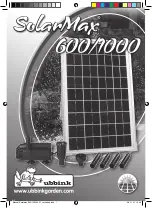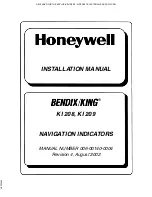
12
Replacing a bypass-diode in
a ProCharger™-CR-junction box
Connecting modules with permanently at-
tached cables but no plug connectors
(ProCharger™ junction box cover)
Crimp-type connectors are recommended.
If spliced joins are used, they should be
soldered, and they must be protected against
corrosion and short circuits with insulating
tape.
For more detailed information, refer to:
}
‘Installing solar power wiring’ (page 8)
Modules with permanently
attached cables may only be con-
nected in parallel. Never connect
such modules in series.
Blocking diodes
Blocking diodes prevent current from flowing
from the battery to the module when no elec-
tricity is being generated. It is recommended
to use blocking diodes when a charging
regulator is not used. Your specialist dealer
can advise you with regard to suitable types,
such as Schottky diodes.
If it is necessary to connect modules in
parallel within a series circuit, the integrated
diodes will not be able to equally distribute
the current. In this case, a supplementary
blocking diode must be used as follows:
}
Connect the modules in parallel, and
connect a large external diode across the
parallel group
}
Fit a heat sink to the diode.
Bypass Diodes
In systems with more than two modules in se-
ries high currents can flow through cells in the
reverse direction in the case of partial shading
(where part of a module is shaded and the
rest is exposed to the sun). These currents can
cause the affected cells to get very hot and
could even damage the module. To protect
modules from such high reverse currents, by-
pass diodes are used. All Shell modules rated
greater than 40 Watt have bypass diodes
already integrated in the junction box.
In the unlikely event of diode failure, a re-
placement can easily be fitted.
Commissioning and Maintenance
In the case of modules with CR cable junction
boxes, do not disconnect the wires from the
terminals. If the voltage across the terminals
differs from the rated value by more than 5
percent, this indicates a bad electrical con-
nection.
Maintenance
Shell Solar recommends the following main-
tenance in order to ensure optimum perform-
ance of the module:
}
Clean the glass surfaces of the module
as necessary. Always use water and a
soft sponge or cloth for cleaning. A mild,
non-abrasive cleaning agent can be used
to remove stubborn dirt.
}
Check the electrical and mechanical con-
nections every six months to verify that
they are clean, secure and undamaged.
}
If any problems arise, have them be inves-
tigated by an authorised specialist.
Observe the maintenance instruc-
tions for all components used
in the system, such as support
frames, charging regulators,
inverters, batteries etc.
Testing and replacing bypass diodes
ProCharger™-CR junction box
The bypass diodes are located underneath a
protective cover. The connections for 6-V and
12-V operation are shown on this cover.
}
Lift off the cover by gently pulling up a
corner of the cover with your finger.
}
Remove the diodes by loosening the fas-
tening screws. Note the orientations of the
polarity markings on the diodes.
Protect yourself against electrical shocks
while commissioning and maintaining the
solar power system. Refer to the precautions
at the beginning of the ‘Electrical Installation’
section.
Testing, commissioning
and troubleshooting
Test all electrical and electronic components
of your system
before commissioning it
.
Follow the instructions in the guides supplied
with the components and equipment. Systems
having a DC voltage greater than 120 V and
systems coupled to the mains grid must be
tested and formally approved by authorised
technical specialists.
Testing modules connected in series before
they are connected to the system
}
Check the open-circuit voltage of every
series circuit. The measured value should
correspond to the sum of the open-circuit
voltages of the individual modules. You
will find the rated voltage in the technical
specifications of the type of module used.
If the measured value is significantly lower
than the expected value, please proceed
as described under ‘Troubleshooting an
excessively low voltage’.
}
Check the short-circuit current of every
series circuit with direct solar illumina-
tion. You will find the rated current in
the technical specifications of the type of
module used. The measured value can
vary significantly, depending on weather
conditions, the time of day and shading of
the module.
Troubleshooting an excessively
low voltage
Typical causes of this problem are improper
connections at the terminals and defective
bypass diodes.
}
First, check all wiring connections.
}
Check the open-circuit voltage of each
module:
}
Fully cover the modules with an opaque
material.
}
Disconnect the wiring at both terminals
of the modules.
}
Remove the opaque material from the
module to be checked and measure the
open-circuit voltage at its terminals. If the
measured voltage is only half the rated
value, this indicates a defective bypass
diode. Refer to ‘Testing and replacing
bypass diodes’.
Modules with permanently attached cables
can only be checked at the open end of the
cable after it has been disconnected.


































